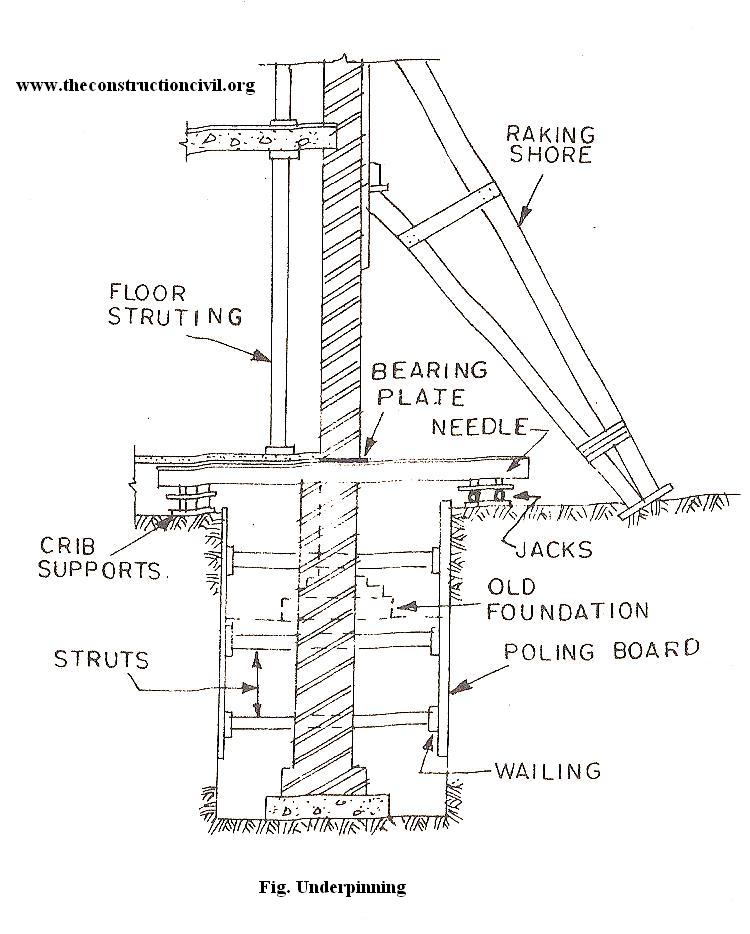Underpinning
Underpinning is applied to the building of new work underneath an existing structure without disturbing its stability. Underpinning may be necessary. when defective foundation of a wall is to be replaced with new foundation or when the existing foundation of a wall is required to be strengthened to enable it to carry more loads.

Underpinning is done in short lengths of 12 inches to 18 inches. Holes are cut into the walls at regular intervals and the entire load of the wall is supported by the needles which rest on sole pieces at ground level. The section of the needle depends upon the load to be supported. The needle may be a timber beam or a rolled steel joist. Thus the structure is held well supported in a secured manner and the footings are relieved of the loads from the wall above. When the R.S.J. beams are used as needles, wooden bearing plates are inserted between the beams and the supported wall to avoid crushing of masonry. A pit of sufficient width to provide easy workability and of the required depth is excavated along the length of the wall. When the foundation of a wall are to be replaced, the section of wall is cut to a length of 90 to 120 cm and new work built. Again, the next 90 to 120 cm length of wall is cut and rebuilt. Thus the entire wall foundation is replaced. When long walls are to be underpinned, the work is started from the centre of the wall and progress is made both ways. The needles are removed only when the new work is completely set and the masonry has gained full strength.
Is Underpinning is useful to you? If so, Comment below.
